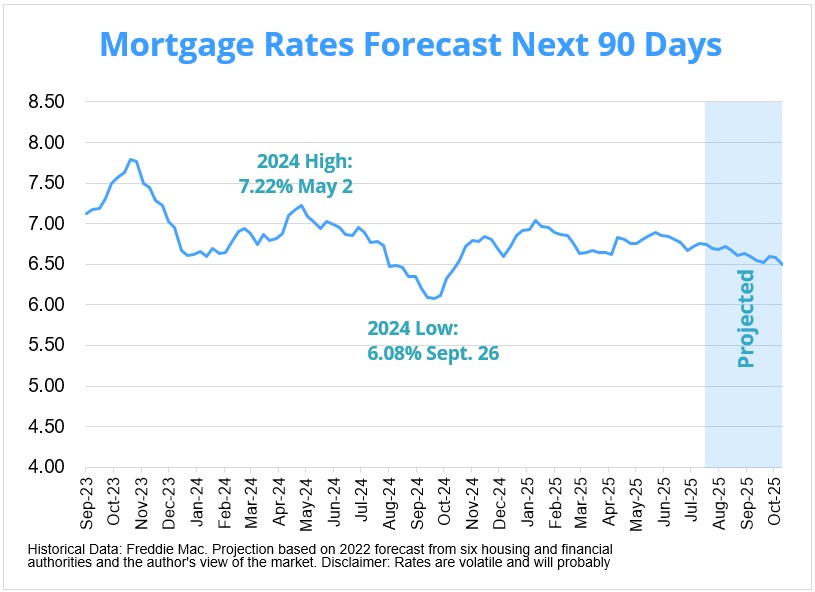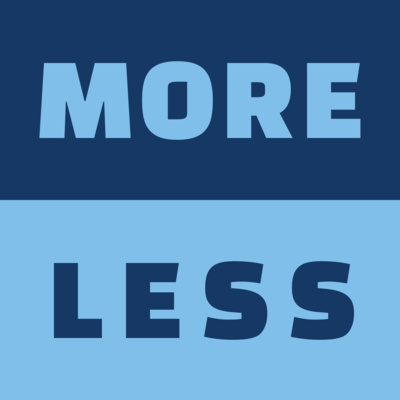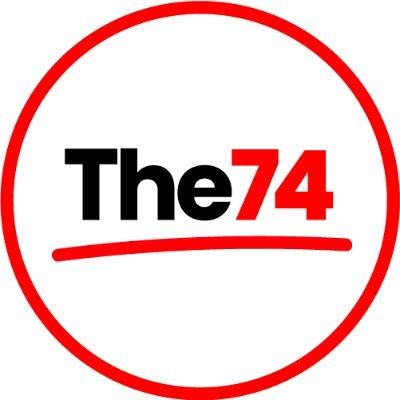Market Analysis of Home Equity Lending and its Implications for Sustainable Development
Report Overview
A study by the Mortgage Bankers Association indicates a sustained growth trajectory for the home equity lending market through 2026. This trend presents significant opportunities and challenges when viewed through the lens of the United Nations Sustainable Development Goals (SDGs). This report analyzes the market dynamics, focusing on their alignment with goals related to economic stability, sustainable infrastructure, and social equity.
Contribution to Economic Stability and Growth (SDG 8 & SDG 1)
A Tool for Household Financial Resilience
Home equity lending serves as a critical financial tool for homeowners, directly supporting the objectives of SDG 1 (No Poverty) and SDG 8 (Decent Work and Economic Growth). By leveraging property wealth, households can build resilience against economic shocks. A notable trend is the shifting use of these funds towards debt consolidation, which rose from 25% of loan purposes in 2022 to 39% in 2024. This strategic debt management can alleviate financial pressure on households, preventing a slide into poverty and supporting stable consumption, which underpins broader economic growth.
Market Projections and Economic Outlook
The continued expansion of this market signals confidence in household financial instruments. Projections indicate robust growth:
- 2025 Forecast: An anticipated 9.8% increase in outstanding Home Equity Line of Credit (HELOC) debt and a 6.6% rise in home equity loans.
- 2026 Forecast: A further 9.5% increase in HELOCs and a 4.1% increase in home equity loans.
This sustained access to liquidity for homeowners is a positive indicator for economic activity and stability, contributing to the aims of SDG 8.
Impact on Sustainable Infrastructure and Communities (SDG 11 & SDG 9)
Trends in Housing Investment
While access to credit is growing, its application towards infrastructure improvement is declining. The use of loans for home renovations fell from nearly two-thirds in 2022 to 46% in 2024. This trend poses a challenge to SDG 11 (Sustainable Cities and Communities), which relies on the continuous improvement and maintenance of housing stock. A lack of investment in renovations can lead to deteriorating urban infrastructure over time. There is a significant opportunity for lenders to create specialized loan products that encourage energy-efficient upgrades, directly aligning with SDG 7 (Affordable and Clean Energy) and SDG 11.
The Need for Industry Innovation
The lending process itself faces significant efficiency challenges that hinder its potential contribution to SDG 9 (Industry, Innovation, and Infrastructure). With application-to-closing turn times averaging 39 days and only 50% of applications reaching closure, the sector’s operational infrastructure is lagging. Modernization through automation, digital platform integration, and self-service options is imperative to build a more efficient, resilient, and sustainable financial industry.
Challenges to Equitable and Responsible Lending (SDG 10 & SDG 12)
Consumer Behavior and Financial Well-being
A key finding is the low utilization rate of approved HELOCs, which fell to 34% in 2024. This consumer caution may reflect responsible financial behavior, aligning with SDG 12 (Responsible Consumption and Production), as households avoid accumulating unnecessary debt. However, the report also suggests this stems from economic uncertainty and a lack of consumer understanding of the products. This knowledge gap is a barrier to financial well-being, a component of SDG 3 (Good Health and Well-being), and highlights the need for greater consumer education.
Operational and Market Hurdles
Several factors complicate the market and challenge its alignment with sustainable and equitable principles.
- High Origination Costs: The average cost to originate a loan exceeded $4,500 in 2024, a 14% increase from 2020. These high costs can be a significant barrier for lower-income homeowners, potentially exacerbating wealth disparities and working against SDG 10 (Reduced Inequalities).
- Inefficient Processes: Long processing times and low closing rates create friction and increase costs, limiting access for many potential borrowers.
- Market Competition: The rise of fintech and Buy Now, Pay Later (BNPL) products offers consumers faster, albeit different, forms of credit, challenging the traditional lending model.
- Consumer Education Gap: A persistent lack of borrower understanding of how home equity products work undermines the principles of responsible lending and consumption as outlined in SDG 12.
Recommendations for Aligning with Sustainable Development Goals
To enhance the home equity market’s positive impact and mitigate its risks, lenders should adopt a strategy focused on sustainability.
- Promote Financial Inclusion and Education (SDG 10, SDG 4): Invest in clear, accessible educational campaigns to demystify home equity products, ensuring homeowners can make informed and responsible decisions.
- Drive Innovation for Efficiency (SDG 9): Aggressively adopt automation and digital solutions to streamline the application and closing process, reducing costs and making credit more accessible.
- Encourage Sustainable Investment (SDG 11, SDG 7): Design and market “green” equity loan products that offer incentives for homeowners to invest in energy efficiency, renewable energy, and climate-resilient home improvements.
- Uphold Responsible Lending Practices (SDG 12, SDG 3): Ensure that marketing and growth strategies are balanced with a strong commitment to responsible lending to safeguard the long-term financial well-being of consumers.
Analysis of Sustainable Development Goals (SDGs) in the Article
1. Which SDGs are addressed or connected to the issues highlighted in the article?
- SDG 1: No Poverty: The article touches on household financial stability. The increasing use of home equity loans for “debt consolidation” (rising to 39% of loans) suggests that households are using assets to manage financial stress, which is a mechanism to prevent or alleviate poverty. Economic uncertainty and fears of a recession, mentioned as reasons for low loan utilization, are also directly linked to poverty risks.
- SDG 8: Decent Work and Economic Growth: The article focuses on the financial services industry, a key component of economic growth. It discusses the health and challenges of the home equity lending market, including efforts to “increase efficiency and reduce costs” through technology. This relates to strengthening domestic financial institutions to support the broader economy.
- SDG 11: Sustainable Cities and Communities: The core topic is housing finance. The article notes that a significant portion of loans (46%) are used for “home renovations.” This investment directly contributes to improving the quality and safety of the existing housing stock, which is a key aspect of sustainable communities.
- SDG 12: Responsible Consumption and Production: The article highlights issues with financial literacy, stating there are “issues with consumers’ understanding of HELOCs” and that the industry needs to help borrowers understand the products. This connects to the goal of ensuring consumers have the relevant information to make responsible financial decisions.
2. What specific targets under those SDGs can be identified based on the article’s content?
-
Target 1.4: “By 2030, ensure that all men and women, in particular the poor and the vulnerable, have equal rights to economic resources, as well as access to… ownership and control over… property… and financial services…”
The article is centered on a financial service (home equity loans) that is directly dependent on the ownership of property. It discusses the growing market for these products, which represents an expansion of access to financial services for homeowners. -
Target 8.10: “Strengthen the capacity of domestic financial institutions to encourage and expand access to banking, insurance and financial services for all.”
The article details the challenges faced by lenders, such as low closing rates (“just 50 percent of home equity applications are closing”) and long processing times (“averaging 39 days”). It also mentions lenders’ intentions to use “automated valuations and decisioning” and “integrations with mortgage platforms” to strengthen their capacity and improve efficiency. -
Target 11.1: “By 2030, ensure access for all to adequate, safe and affordable housing and basic services…”
The use of home equity loans for home improvement is directly relevant to this target. The article states that in 2024, 46% of these loans were used for “home renovations,” which is a direct investment by homeowners to improve the adequacy and quality of their housing. -
Target 12.8: “By 2030, ensure that people everywhere have the relevant information and awareness for sustainable development and lifestyles…”
The article explicitly points to a gap in consumer knowledge, noting “issues with consumers’ understanding of HELOCs” and that the “industry has an issue with helping borrowers understand what the products are and how they work.” This highlights a direct need to provide better information for responsible financial consumption.
3. Are there any indicators mentioned or implied in the article that can be used to measure progress towards the identified targets?
-
For Target 1.4 (Access to financial services): The article provides several metrics that can serve as indicators.
- Total outstanding home equity debt: The study encompassed “$70 billion in outstanding borrowings,” which measures the scale of this financial service.
- Percentage of loans used for debt consolidation: The rise to “39% in 2024, up from 25% in 2022” can be an indicator of how households use financial products to manage economic vulnerability.
-
For Target 8.10 (Capacity of financial institutions): The article mentions specific operational metrics that can act as indicators of institutional efficiency.
- Application closing rate: The article states this is currently “just 50 percent.” An increase would indicate improved capacity.
- Average loan turn times: The current average of “39 days” is a direct measure of efficiency.
- Lender cost per loan: The “average cost for a lender to produce a HELOC or home equity loan was more than $4,500,” which is a key performance indicator for the industry.
-
For Target 11.1 (Adequate housing): A direct indicator is provided in the article.
- Percentage of loans used for home renovations: The figure of “46%” is a direct measure of private investment in improving housing stock.
-
For Target 12.8 (Information and awareness): The article implies indicators by highlighting a problem.
- HELOC utilization rate: The fall to “just 34%” is theorized to be partly due to economic uncertainty but also implies a lack of consumer confidence or understanding, which could be used as a proxy indicator for awareness.
Summary Table of SDGs, Targets, and Indicators
| SDGs | Targets | Indicators Identified in Article |
|---|---|---|
| SDG 1: No Poverty | 1.4: Equal rights to economic resources and access to financial services. |
|
| SDG 8: Decent Work and Economic Growth | 8.10: Strengthen the capacity of domestic financial institutions. |
|
| SDG 11: Sustainable Cities and Communities | 11.1: Access for all to adequate, safe and affordable housing. |
|
| SDG 12: Responsible Consumption and Production | 12.8: Ensure people have relevant information and awareness for sustainable lifestyles. |
|
Source: nationalmortgagenews.com







